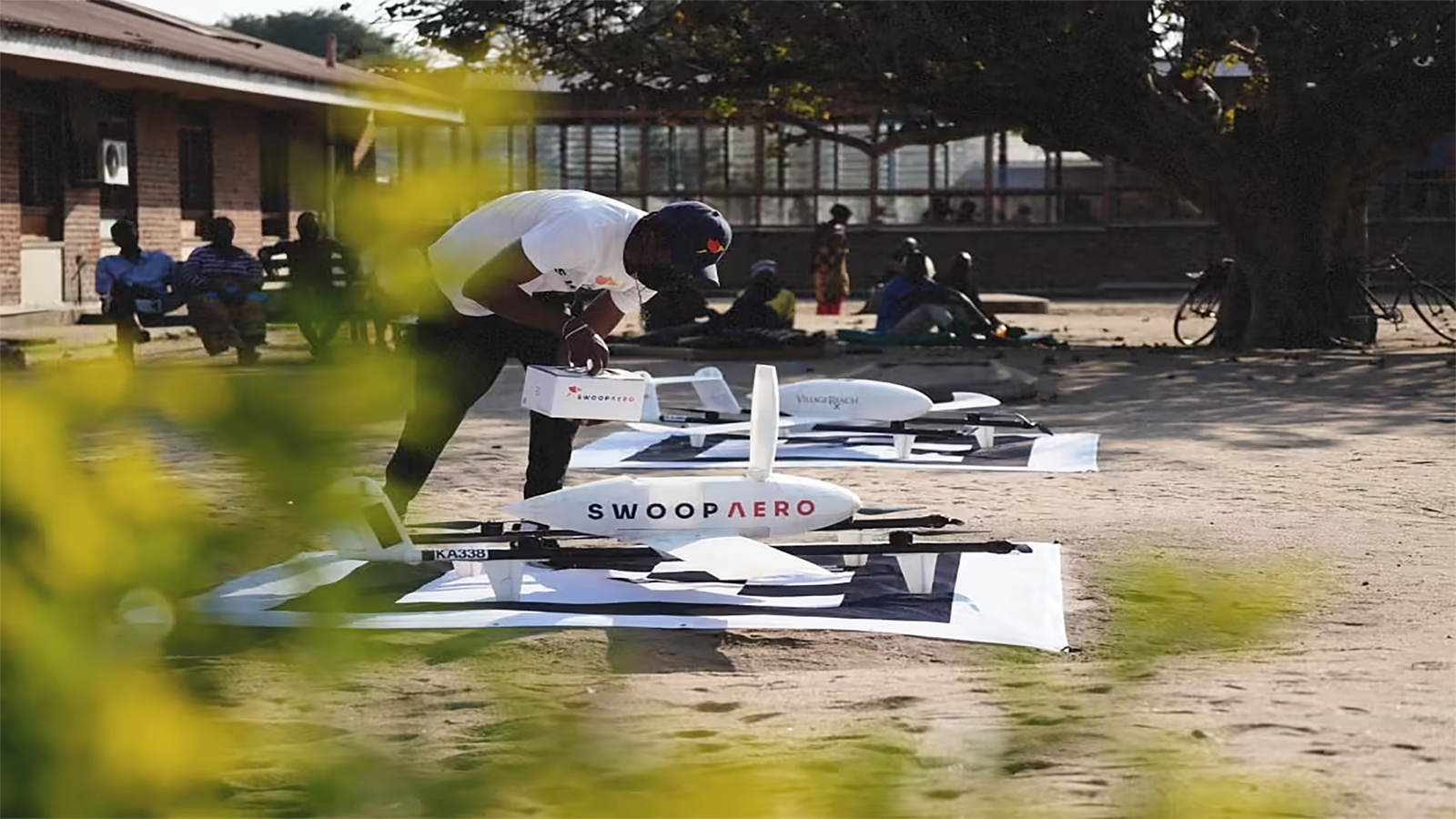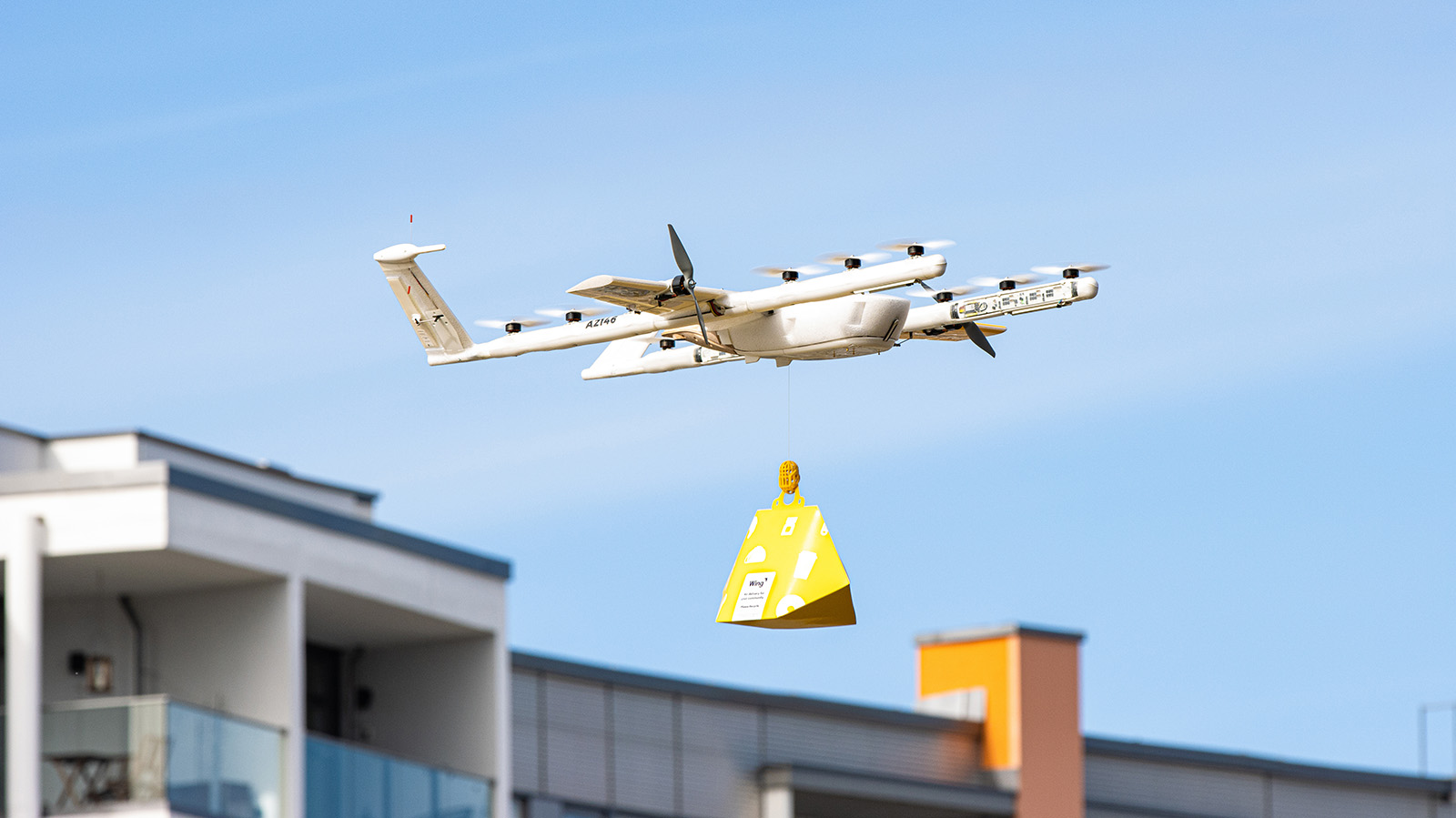Stay Up to Date
Submit your email address to receive the latest industry and Aerospace America news.
Flying autonomously will be critical for drone operators who want to carry cargo to a variety of destinations. FAA has not determined how it would authorize such flights, throwing business plans into question. Aaron Karp spoke to manufacturers and industry groups about strategies for speeding up the FAA process and starting initial operations while those deliberations proceed.
Doubts are mounting in the emerging autonomous aircraft industry that FAA will be able to devise a process for certifying such designs for cargo flights in a timely way.
FAA’s process for approving and certifying aircraft “was developed in the 1960s and reflects an era when aircraft were simpler,” Pete Bunce, CEO of the General Aviation Manufacturers Association, told the U.S. House Transportation and Infrastructure Committee in February. FAA is stuck with a legacy “document-centric approach that is very transactional in nature,” he said.
At the same hearing, under questioning from lawmakers, FAA Acting Associate Administrator for Aviation Safety David Boulter acknowledged: “The pace of technology has increased, but the pace of our processes have not.”
Manufacturers are considering two coping strategies: Start operations outside the United States, instead of waiting years for an FAA type certificate. Make creative arguments about how to win permission to start operations before receiving type certificates.
“We will get FAA certification, but because that’s a rather long time frame, we can’t pin the whole business model, or plan on making money as a company, on FAA certification,” says Dave Merrill, CEO of Elroy Air, which is developing an electric vertical takeoff and landing (eVTOL) cargo aircraft it calls Chaparral. “We’ve got to have a first chapter that doesn’t require” FAA approval, “and so that will be commercial operations outside the U.S.”
The San Francisco-based company plans to begin these flights as soon as next year, with a long-term goal of securing FAA approval to begin autonomous flights in the U.S. in 2026. In Merrill’s view, countries including Australia, Ghana, Rwanda and others in Africa are more likely to approve Chaparrals to autonomously fly cargo over low-population areas because these flights pose a low risk of loss of life. No decisions have been made regarding specific countries, or whether these flights would be operated by Elroy, companies that have placed provisional orders for Chaparrals, or a combination.

Elroy is designing the multiple vertical lift rotors and forward propellers on Chaparrals to be driven by electricity stored in batteries, but each aircraft would also have a conventional combustion engine to take over if the batteries are depleted. This would allow Chaparrals to fly up to 483 kilometers — at least double the ranges targeted by passenger air taxi builders who want to fly their aircraft in urban areas. An additional bonus: Elroy believes this hybrid-electric propulsion all but eliminates the risk of a Chaparral running out of power midflight and dropping the cargo pod slung underneath its fuselage.
Evidence of successful flights, including whether Chaparrals autonomously picked up and dropped off their cargo as planned, could then be used to help prove the design’s safety to FAA, Merrill says, noting that commercial and humanitarian service in Africa and other regions and FAA approval are linked.
In the view of Mike Hirschberg, Elroy’s approach has a strong chance of success. The Vertical Flight Society executive director says that regulators in many African countries, as well as Australia and New Zealand, are “more permissive” about clearing aircraft for operations in their airspace compared to FAA and are likely to view these aircraft as drones that will transport valuable cargo, such as medical supplies, to remote areas. The South African Civil Aviation Authority, for example, authorizes drone deliveries via remotely piloted aircraft systems operators certificates, and Hirschberg believes a similar certificate could be given to cargo eVTOLs such as Elroy’s.
He adds that Elroy could operate “hundreds or thousands of flights in other countries, and then once you have the data, you can say to the FAA, ‘We’ve flown thousands of hours without a mishap.’ The FAA tends to look more at data” than other regulators.
An Australian drone company following a similar strategy could provide a template for Elroy. Since 2019, Swoop Aero has conducted thousands of deliveries in the East African country of Malawi with its winged Kite drones under an operator certificate similar to those issued by South Africa. And last year, Swoop began pharmaceutical deliveries in Australia with Kites, which each can carry 3 kilograms of cargo up to 175 kilometers or 5 kg of cargo up to 130 km. Swoop plans to use data from its 24,000 flights to help receive type certificates from FAA and Australia’s Civil Aviation Safety Authority.
“Regulatory approval is necessarily a gradual process, particularly for technology and operations that are new to the operating environment,” Swoop Aero CEO Eric Peck tells me via email. “What’s possible in terms of technological advancement is not necessarily what’s practical to do right now as regulatory pathways are still being established to ensure these can be done safely. There is a learning process to be undertaken by both drone providers and different levels of government to ensure clarity around expectations and accountability.”
He says Swoop deploys a fleet of drones into a given area and operates them as part of a network that “delivers a range of services for the entire population, including medical transport, emergency management, disaster response, monitoring and mapping, search and rescue, and general delivery.”

By limiting Kite flights to sparsely populated areas, Swoop is able to fly its drones in Australia while it awaits completion of its type certificate.
“Many aviation regulations globally currently limit unmanned operations to areas with low population density in order to minimize risk of operations, restricting the types of regions serviceable by drone,” Peck explains. But he adds that Kites are capable of flying safely over densely populated areas and believes, eventually, regulators will be comfortable with such operations.
Indeed, avoiding such high-population areas will be a key selling point for FedEx. The shipping behemoth plans to use Chaparrals to move cargo between warehouses, replacing less efficient trucks. Later this year, Elroy and FedEx plan to begin U.S. test flights under a special airworthiness certificate at locations yet to be announced. These tests would help demonstrate that Chaparrals can safely move shipments between FedEx sortation warehouses. Merrill says if and when Chaparrals are operated commercially by FedEx, they will fly on deliberate, consistent flight paths that aim to avoid high-population areas.
What’s in a name?
The experiences of companies that have tested package delivery drones in the U.S. could be a cautionary tale for Elroy and FedEx. Alphabet’s Wing and Amazon have experimental special airworthiness certificates that permit them to conduct limited, residential deliveries in select U.S. communities, but executives from both companies have expressed frustration with the lack of progress toward how their drones would be type certified.
During a March hearing, U.S. Rep. Garret Graves, chair of the House’s Subcommittee on Aviation, said that developers “have faced significant obstacles or hurdles as a result of the lack of predictability and certainty in the regulatory process of the FAA,” adding that there is a “lack of clarity for new entrants in the market” about gaining approval for their aircraft.
Wing CEO Adam Woodworth told Graves and his colleagues that FAA has “engaged in a multiyear internal debate regarding how to appropriately tailor a type certification process” for drones like Wing’s 4.5-kg design, and the agency has struggled to find an answer.
Woodworth has one: Allow these drones to operate without type certificates while adhering to strict safety standards. He said this could be “modeled after the FAA’s existing and successful light-sport aircraft certification process,” a category that includes gliders and lighter-than-air balloons. “Under this process, the FAA will adopt risk-appropriate consensus standards and manufacturers will then build to and declare compliance with those standards.”
If drones could be cleared to operate in the U.S. in this manner, then the same process could potentially be applied to cargo eVTOLs like Elroy’s, according to the Vertical Flight Society’s Hirschberg. He said the agency could conclude that a cargo eVTOLs is a “drone, just a big one.”
When I asked FAA about the feasibility of this scenario, a spokesperson responded via email: “The FAA is using its standard processes to establish airworthiness criteria for both powered-lift aircraft and larger drones, including for cargo operations.”
Today, “there is no path” for cargo eVTOLs to be approved in the manner of light-sport aircraft rather than through type certification, “but I wouldn’t say it’s not possible,” says Walter Desrosier, GAMA’s vice president for engineering and maintenance. Large volumes of revenue cargo “typically have to be carried in a type-certified aircraft,” he says. “But we do have some new situations here. We’re talking about not having a pilot on board, so the risk is less. If you’re only operating in remote areas, you don’t have the risk of lives on the ground. So, with the combination of those things, I think it’s possible” cargo eVTOLs might not require type certification.
He adds that FAA would have “to determine appropriate airworthiness standards” for these aircraft, plus draft operating rules.

For now, Elroy and Swoop maintain their goals to type certify their aircraft, which Swoop’s Peck asserts is the best path for a manufacturer: “While we don’t need a type certificate for our current operations, the Kite has been designed to deliver a standard of safety and operational agility that enables safe flight across urban skies and over densely populated areas. Type certification remains the world’s most comprehensive regulatory and safety framework for aviation-based activities.”
“Comprehensive” is an apt word, according to Roberto Licata, the aerospace and defense industry solution experience director at French software firm Dassault Systèmes. A typical type certification program conducted by FAA or the European Union Aviation Safety Agency on an aircraft design “that is not a breakthrough technology” takes an average of seven years. This means the process for certifying new technology could be quite time-consuming.
The current process “is very linear,” he said during a presentation at the Vertical Flight Society’s March conference in Long Beach, California. “You have many disconnected tools.”
Licata suggests that one way FAA could expedite the process is by moving toward a heavy emphasis on computer modeling over physical tests and paper documents. Aircraft developers would create a “virtual twin” of their product that could be used by regulators to streamline the process before physical tests start. Once actual flight tests start, every change needed to the aircraft or its design could be tested first on the digital twin, again streamlining the process, he said.
“Certification doesn’t happen out of the blue,” Licata said. “It is part of an end-to-end process” that could be significantly sped up via digitalization.
But for now, developers will continue navigating an uncertain certification process. But if Elroy’s 2026 target remains uncertain, Merrill takes some comfort in the notion that ongoing drone deliveries by Kite and other companies are helping make the case for autonomous flights.
“They’re definitely helping because they’re showing scaled, safe operations with a lot of drones doing a lot of deliveries, and that helps everyone,” he says, including regulators, “to see that it can be done.”
About Aaron Karp
Aaron is a contributing editor to the Aviation Week Network and has covered the aviation business for 20 years. He was previously managing editor of Air Cargo World and editor-in-chief of Aviation Daily.
Related Posts
Stay Up to Date
Submit your email address to receive the latest industry and Aerospace America news.




